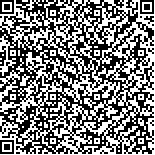陈栩铤,顾旭东,姚云海,等.单侧高频重复经颅磁刺激对脑卒中吞咽障碍及功能性磁共振成像的影响[J].中华物理医学与康复杂志,2021,43(12):1105-1109
扫码阅读全文

|
| 单侧高频重复经颅磁刺激对脑卒中吞咽障碍及功能性磁共振成像的影响 |
|
| |
| DOI:10.3760/cma.j.issn.0254-1424.2021.12.011 |
| 中文关键词: 重复经颅磁刺激 脑卒中 吞咽功能障碍 功能性磁共振成像 |
| 英文关键词: Transcranial magnetic stimulation Stroke Dysphagia Functional magnetic resonance imaging |
| 基金项目:浙江省自然科学基金(LQ19H170001);浙江省医药卫生科技项目(2019RC291);浙江省医药卫生科技计划平台计划项目(2019ZD020);浙江省基础公益研究计划(LGF19H170004);浙江省基础公益研究计划(LGF21H170003) |
|
| 摘要点击次数: 5153 |
| 全文下载次数: 5735 |
| 中文摘要: |
| 目的 观察单侧高频重复经颅磁刺激(rTMS)对脑卒中后吞咽障碍患者吞咽功能和功能性磁共振成像(fMRI)的影响。 方法 选取脑卒中后吞咽障碍患者20例,按随机数字表法分为治疗组和对照组,每组10例。2组患者均行传统康复吞咽训练,治疗组在此基础上采用高频rTMS刺激健侧大脑半球舌骨上肌群皮质对应区,刺激频率5 Hz,刺激强度为80%静息运动阈值(RMT),刺激时间2 s,间歇10 s,刺激时间为20 min,对照组在传统康复吞咽训练的基础上给予假rTMS治疗,操作方法及刺激参数同治疗组,但仅将探头垂直于患者颅骨,不给予刺激。分别于治疗前和治疗2周后(治疗后),采用进食评估问卷调查工具-10(EAT-10)、吞咽功能性交流测试(FCM)及改良曼恩吞咽能力评估量表(MMASA)进行疗效评估。另采用fMRI对2组患者相关脑区变化进行观察。 结果 治疗后,2组患者的EAT-10评分、FCM评级、MMASA评分均优于组内治疗前(P<0.05),且治疗组治疗后的EAT-10[(18.40±3.10)分]、FCM评级[(6.10±0.74)级]、MMASA评分[(90.30±6.34)分]均优于对照组(P<0.05)。治疗后,治疗组大脑顶叶、顶上小叶、BA7区、BA40区激活范围较组内治疗前和对照组治疗后均明显增大(P<0.05)。 结论 5 Hz高频rTMS作用于健侧大脑半球舌骨上肌群皮质对应区,可改善脑卒中患者的吞咽障碍,促进脑卒中吞咽困难患者吞咽功能相关脑区激活。 |
| 英文摘要: |
| Objective To observe any effect of repeated unilateral high frequency transcranial magnetic stimulation (rTMS) on the swallowing function and functional magnetic resonance images of dysphagic stroke survivors. Methods Twenty stroke survivors with dysphagia were randomly divided into a treatment group (n=10) and a control group (n=10). Both groups received traditional swallowing rehabilitation training, while the treatment group was additionally provided with high frequency rTMS over the cortical area of the suprahyoid muscle group of the healthy contralateral cerebral hemisphere. The stimulation frequency was 5Hz and the stimulation intensity was 80% of the resting movement threshold. During the 20-minute treatment, there was a 20-second interval between each 2-second dose of stimulation. Before and after the treatment, both groups were evaluated using the Eating Assessment Tool-10 (EAT-10), a swallowing functional communication measurement (FCM) and the modified Mann Assessment of Swallowing Ability (MMASA). In addition, functional magnetic resonance imaging was used to observe any changes in the relevant brain regions. Results After the treatment the average EAT-10, FCM and MMASA scores of both groups were significantly better than those before the treatment, with the treatment group′s averages significantly superior to those of the control group. After the treatment, the activation range of the parietal lobe, the superior parietal lobule, the BA7 region and the BA40 area in the treatment group was significantly larger than before the treatment and larger than the control group′s ranges. Conclusions Repeated high-frequency transcranial magnetic stimulation of the cortical area of the suprahyoid muscles in the contralateral cerebral hemisphere can improve dysphagia and promote the activation of brain areas related to swallowing after a stroke. |
|
查看全文
查看/发表评论 下载PDF阅读器 |
| 关闭 |